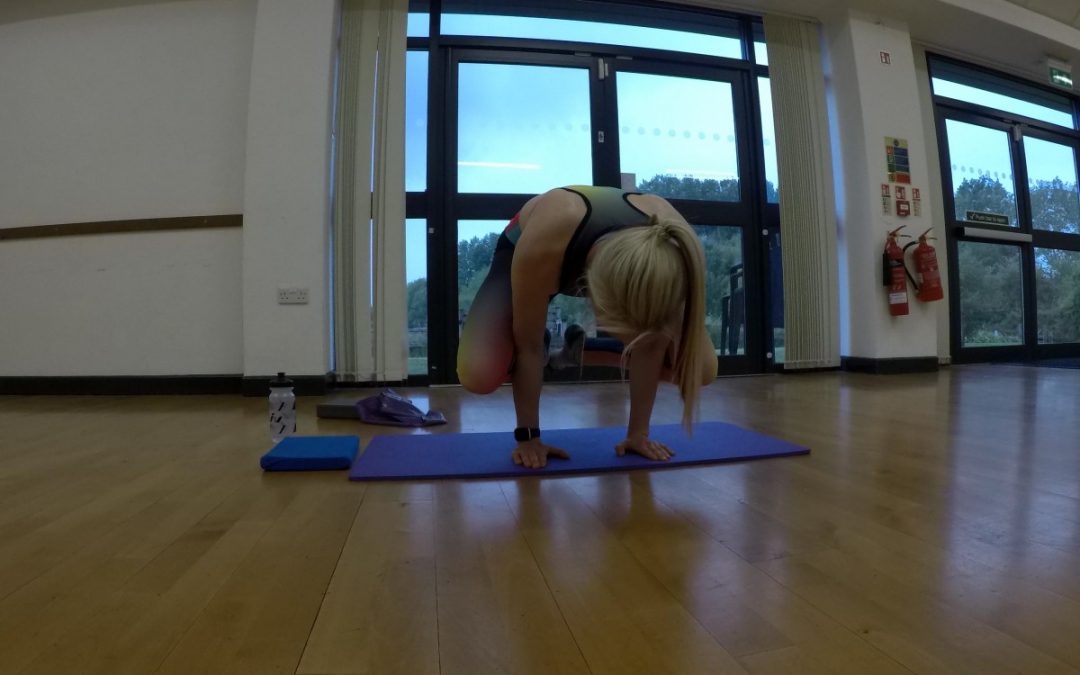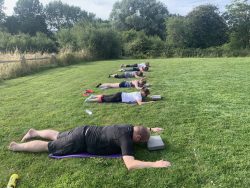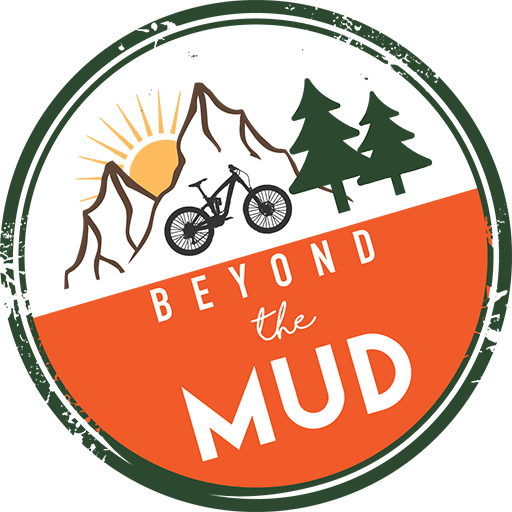
by hattenburrow | Nov 12, 2019 | Pilates
One is a holistic discipline originating from ancient India, the other a specific physical system devised by German anatomist Joseph Pilates in the early 20th century, but there’s much cross-over, today I hope to help unravel some of the differences for you.
Today, yoga and Pilates are both renowned for their numerous health benefits, from offering connection to the body and stress relief, to developing flexibility, strength, control and endurance. The key factor they both share is working with breathing to deepen the moves you practise during your sessions.
According to the NHS yoga is an ancient form of exercise that focuses on strength, flexibility and breathing to boost physical and mental wellbeing. The main components of yoga are postures (a series of movements designed to increase strength and flexibility) and breathing.
What are the health benefits of yoga?
Dozens of scientific trials of varying quality have been published on yoga.
While there’s scope for more rigorous studies on its health benefits, most studies suggest yoga is a safe and effective way to increase physical activity, especially strength, flexibility and balance.
There’s some evidence that regular yoga practice is beneficial for people with high blood pressure, heart disease, aches and pains – including lower back pain – depression and stress.
So to me yoga sounds rather like Pilates! However, in your local Pilates class you will probably find no meditation that you may come across in yoga.
What is Pilates?

Pilates looks to work your whole-body using weight bearing exercises and in some cases weights, resistance bands, balls and equipment such as the Reformer, Cadillac and Wunda Chair. With its system of pulleys and springs, handles and straps, the apparatus can provide either resistance or support, depending on the client’s needs.
Pilates joins the body with the mind, it requires good concentration, awareness of your body and breath with a deep focus needed for advanced level Pilates all of which can help to boost your mental health.
What are the health benefits of Pilates?
Regular Pilates can help to improve posture, muscle tone, balance and joint mobility, as well as relieve stress and tension. For elite athletes, including dancers, cyclists, golfers and runners Pilates can complement training by developing whole-body strength and flexibility, and help reduce the risk of injury.
Pilates is a fundamental part of my training as a mountain biker I use it not only to help stretch out my muscles but build all over body strength especially in my back and core which help me be a better cyclist. It has also helped me with my balance which has transferred to my balance and coordination on the bike.
Research from MINDBODY has shown that 70 per cent of those who do yoga or Pilates say that it relieves stress for them. Both practices teach breathing techniques that can help to combat feelings of stress and anxiety, while both traditionally encourage students to align the body with the mind and spirit, taking time to focus on self-care.

I run my Pilates classes from West Stoke, Westbourne, Fishbourne, Havant, Waterlooville and Bedhampton. I run mainly mixed ability classes keeping my numbers low so I can give one to one support to my clients. Have a look at my Pilates page for more information.
![Pilates – My top tips for a better posture.]()
by hattenburrow | Sep 7, 2018 | Pilates
I have been doing Pilates for over 10 years now after getting a kite surfing injury to my lower back, Pilates was my way back to being able to lead a ‘normal’ life. I now use Pilates as an additional workout which strengthens my whole body and supplements the physically demands of my cycling training. On the flip side I work in an office 9 to 5, working at a desk all day this constant leaning over position can cause all sorts of problems including lower back pain. As I am aware that my lower back has been under stress in the past I work hard to maintain good posture, core activation and thought a blog post with some tips may be useful to others.
- Eye line – avoid looking down at the ground or your phone when walking. Try and look to the horizon (where possible), chin pointing down and tucked in slightly to keep the neck/upper spine in neutral. This will reduce neck pain – remember, we are carrying our heads which weight about 10 pounds.
- Shoulders and shoulder blades –If you draw back and down your scapulae slightly this will ‘lift’ the chest, which is a good position to be in. This will also assist in tightening the stretched muscles. Many people suffer
 from a rounded kyphotic position so stretch the tight muscles such as the pectorals and anterior deltoids
from a rounded kyphotic position so stretch the tight muscles such as the pectorals and anterior deltoids
- Back straight – think about standing tall, lengthen the spine and lift up. Imagine you are being pulled to the ceiling like a puppet. Try and avoid sticking your bum out, keep the hip bones level to keep the pelvis in neutral, and tail bone pointing to the floor
- Tummy muscles – imagine you have a put a belt on and have done it up one hole tighter than normal. Pulling in the belly button to your spine will exercise the rectus abdominis as well as activate the TVA muscles which will take the pressure off the back. This will seem strange to some people but eventually the abdominals will become stronger and it will become automatic. If you work in an office try sitting on a ball instead of a chair.
- Foot strike – lead with the heel and roll through the foot onto the ball of the foot and push off using the toes. Placing the toes/ball of the foot down first can put additional stress on the knees and ankle joints. Walking barefoot is great but not always possible so check that appropriate and fitted shoes are worn so that the feet can move inside the shoe/trainer
- Breathing – During Pilates we talk about wide thoracic breathing which helps us focus on the movement and encourages concentration. This also will help relax tense muscles and you will take in more oxygen with longer deeper breathing so have a go whilst your walking around the supermarket or sitting at your desk.
- Bag carrying – try and use a rucksack on long walks as this will distribute the weight evenly across the back as opposed to a shoulder bag, if you use a shoulder bag swap shoulders and don’t carry the kitchen sink!

- Baby carrying – for younger children you could use a carrier or sling on the front or back this, like the bag allows the weight to be distributed evenly. If you tend to carry baby or toddler on a hip then try and swap regularly.
I hope these tips will help you improve your posture and reduce and niggles. The best way to improve your core is to get to your local Pilates class! Take a look at my Pilates page for Pilates classes in West Sussex and Hampshire.




 from a rounded kyphotic position so stretch the tight muscles such as the pectorals and anterior deltoids
from a rounded kyphotic position so stretch the tight muscles such as the pectorals and anterior deltoids